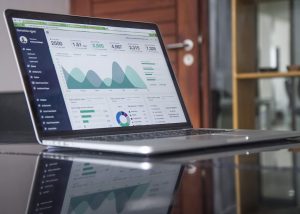The foreign exchange (forex) market is one of the most dynamic and highly traded financial markets in the world. With a daily trading volume of over $5 trillion, it offers numerous opportunities for traders to make profits. However, analyzing forex market trends and making accurate predictions can be challenging. In this article, we will take a closer look at how to analyze the forex market and make informed trading decisions.
Step 1: Understand the Basics of Forex Market Analysis
Before diving into the technical aspects of forex market analysis, it is essential to understand the fundamental factors that drive currency movements. Economic indicators such as GDP, inflation rates, interest rates, and employment figures can have a significant impact on forex markets. Geopolitical events such as elections, trade deals, and natural disasters can also cause fluctuations in currency values. Keeping up-to-date with news and events that impact forex markets is essential for effective analysis.
Step 2: Choose Your Analysis Approach
There are two primary approaches to forex market analysis – fundamental analysis and technical analysis.
Fundamental analysis looks at the underlying economic and geopolitical factors that influence currency values. Traders who use this approach study economic indicators and news events to make predictions about future currency movements.
Technical analysis, on the other hand, focuses on price charts and market trends. Traders who use this approach use charts and graphs to identify patterns and trends that indicate buying or selling opportunities.
Both approaches have their advantages and disadvantages, and many traders use a combination of both methods to make informed trading decisions.
Step 3: Use Technical Analysis Tools
Technical analysis tools are essential for identifying patterns and trends in forex markets. Some of the most commonly used technical analysis tools include:
1. Trend Lines: Trend lines are used to identify the direction of the trend in a currency pair. They are drawn by connecting the highs or lows of a currency pair over a specific period.
2. Moving Averages: Moving averages are used to smooth out price fluctuations and identify trends. They are calculated by averaging the price of a currency pair over a specific period.
3. Oscillators: Oscillators are used to identify overbought or oversold conditions in a currency pair. Some of the most commonly used oscillators include the Relative Strength Index (RSI) and the Stochastic Oscillator.
4. Candlestick Charts: Candlestick charts are used to identify price patterns and trends. They provide information about the opening, closing, high, and low prices of a currency pair over a specific period.
Step 4: Analyze Market Sentiment
Market sentiment refers to the overall attitude of traders towards a particular currency pair. Sentiment analysis involves studying market news and events to identify the overall mood of traders. For example, positive news about the economy of a country can lead to a bullish sentiment towards its currency. Similarly, negative news can lead to a bearish sentiment. Understanding market sentiment can help traders make informed decisions about when to buy or sell a currency pair.
Step 5: Monitor Economic Indicators
Economic indicators such as GDP, inflation rates, and employment figures can have a significant impact on forex markets. Traders who use fundamental analysis should keep track of these indicators and use them to make predictions about future currency movements. For example, a strong GDP figure can lead to a bullish sentiment towards a currency, while high inflation rates can lead to a bearish sentiment.
Step 6: Keep a Trading Journal
Keeping a trading journal is essential for effective forex market analysis. It allows traders to track their trades and identify patterns and trends in their trading behavior. Traders should record the entry and exit points of their trades, the reasons for their decisions, and the outcomes of their trades. This information can be used to identify strengths and weaknesses in their trading strategies and make adjustments accordingly.
Conclusion
Analyzing forex markets and making informed trading decisions can be challenging, but it is essential for success in this highly dynamic and competitive market. Traders should use a combination of fundamental and technical analysis tools, monitor market sentiment and economic indicators, and keep a trading journal to identify patterns and trends in their trading behavior. By following these steps, traders can increase their chances of making profitable trades in the forex market.






